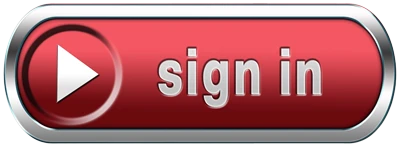Amazon Launches New Telehealth Medical Services for Its Prime Members
Plan offers members transparent pricing for medications and 24/7 virtual consults
Amazon is working to be price competitive in the healthcare products and services it provides. A recently launched plan offers Prime members fixed prices and affordable monthly rates for telehealth visits, treatment plans, and medication delivery for various types of health, beauty, and lifestyle care. Healthcare providers such as office-based physicians, clinical laboratories, and anatomic pathology groups, may once again be impacted by Amazon’s foray into medical care.
This is not the first time that Amazon (NASDAQ:AMZN) has waded into the medical pond. In 2022, the Seattle-based ecommerce company purchased One Medical (NASDAQ:ONEM) for $3.9B while at the same time launching Amazon Clinic (now known as Amazon One Medical Pay-per-visit), a virtual healthcare service, in an attempt to “reinvent” healthcare. Dark Daily covered these events in an ebrief at that time.
Since then, Amazon has offered pay-per-visit telehealth consultations to determine treatments for more than 30 common ailments such as pink eye (conjunctivitis), flu, and sinus conditions. Now, Amazon is adding “low, clear upfront pricing for a clinical visit, treatment plan, and fast, free medication delivery for Prime members for a range of common health, beauty, and lifestyle concerns, including anti-aging skincare treatment, men’s hair loss, erectile dysfunction, eyelash growth, and motion sickness,” according to an Amazon news release.
“We’re committed to giving customers convenient, affordable care options that put them in control of their health,” said Bergen Penhart, general manager for Amazon One Medical Pay-per-visit, in the news release. “This new offering makes it easy for Prime members to get expert clinical advice and prescribed treatments for common health, beauty, and lifestyle needs, all from the comfort of home.”
The platform supports both on-demand messaging and virtual video telehealth visits to address more than 30 common medical issues.

“This simple care experience was built to meet the needs of today’s customer. At Amazon, we’re working to reduce the burden on patients who’d like to move forward with care, but may be tired of navigating the hurdles of our healthcare system, waiting in a long line at the pharmacy, or worried about a surprise bill or medication cost,” said Harvard-trained lung specialist and chief medical officer for Amazon, Vin Gupta, MD (above). “We’re helping patients re-engage in care and spend time doing what they love instead.” These new medical initiatives from Amazon are meant to be convenient for patients, but have an impact on local healthcare providers, clinical laboratories, and pharmacies. (Photo copyright: Vin Gupta, MD.)
Convenience, Transparency, 24/7 Access to Healthcare
Telemedicine has seen a sharp rise in recent years, aided by necessity during the COVID-19 pandemic. Forbes reports that the percentage of hospitals offering telemedicine rose to 72% in 2021. Since so many Americans today use the Internet for everything from shopping for medications to interfacing with healthcare providers, it makes sense that Amazon, one of the world’s most successful online retailers, would want a cut of the action.
So what is the retail giant offering now that improves upon its previous healthcare services? It is promoting fixed prices and monthly payments with complete transparency. There are also no surprise bills for Amazon One Medical patients. Prime members can see the price for their telehealth consultation and prescription before deciding whether to go forward with the appointment and treatment.
In addition, Amazon One Medical patients can use a smartphone app (available on both Android and Apple iPhone) to review prices for treating five common health conditions and beauty treatments, as well as meeting virtually with a clinician 24/7 from anywhere in the world. In some areas Amazon even offers same-day or next-day medication deliveries.
“This simple, upfront pricing helps customers shop for their healthcare and make informed, confident decisions. Customers only pay for the cost of the consultation and medication (if prescribed). There are no additional fees, expenses, or subscriptions needed beyond Amazon Prime,” the news release states.
First Wrongful Death Lawsuit Filed against Amazon One Medical
However, the road to success in healthcare is not without its potholes. In “Amazon One Medical Call Centers Found Wanting in Washington Post Report,” we covered a 2024 Washington Post story on leaked documents that appeared to indicate Amazon’s One Medical primary care call center was not using trained, certified medical professionals to field patient phone calls and provide telehealth guidance.
This led to disappointment among Amazon One Medical patients, we reported.
According to The Washington Post, Amazon bought One Medical and hired workers for their call centers with “limited training and little to no medical experience.” This allegedly caused serious medical issues such as high blood pressure spikes and blood in stool to go unrecognized.
Caroline O’Donovan, the Washington Post reporter who broke the story, told PBS, “In the documents that were leaked to us, there’s a doctor who wrote a note saying, ‘I don’t think these call center people even realize that they’re triaging patients, which is not something that they’re qualified to do.’”
Amazon acknowledged that initial calls could have been handled more effectively, however the company insisted that no patients were harmed. In an email statement, Amazon spokesperson Dawn Brun said, “We take patients’ feedback seriously and the [Washington Post] story mischaracterizes the dedication we have to our patients and care teams.”
Nevertheless, Amazon One Medical now faces a lawsuit. The Daily Mail reported that Suzanne Tong of Oakland, Calif., is suing Amazon for negligence after her husband died following a video consultation during which he was told to “take an inhaler” for symptoms that included shortness of breath and blue feet.
“Hours later, the 45-year-old was rushed to the emergency department at the Alta Bates Summit Medical Center, where [according to court documents] he ‘collapsed in the waiting room and expired,’” The Daily Mail reported, adding, “The [court] filing claims that ‘to a reasonable degree of medical certainty,’ if Mr. Tong had received the ‘proper care, treatment and follow up’ at his appointment with Amazon One Medical on December 18, 2023, he would have survived.”
Amazon would not comment on the impending litigation citing patient privacy concerns, instead providing a statement to the press. In it, an Amazon One Medical spokesperson said, “While we are prohibited by law from discussing patient records, we refute claims that a change in the duration of visits or location of a virtual visit has impacted the care provided at Amazon One Medical,” the Los Angeles Times reported. “We care deeply about every patient we serve, and the quality and safety of our care are our highest priorities. We’re proud of our extensive quality and safety measures, and of the health outcomes we help our patients achieve. We take concerns about our care extremely seriously, and we’re committed to continuous improvement.”
According to The Daily Mail, this is the first wrongful death lawsuit brought against Amazon One Medical.
Warning to Clinical Labs, Pathology Groups
Stories like these raise questions as to whether the quality of care delivered by various telehealth services is being sacrificed for the sake of convenience and price transparency. Americans are increasingly living more online. Medical services moved online out of necessity, and many healthcare providers who stayed online have expanded their offerings due to customer demand.
Clinical laboratories and anatomic pathologists would be wise to stay informed on this growing trend. These business launches are a warning shot for lab managers and pathology groups to invest time and money becoming more patient/consumer friendly providers with websites that feature price transparency.
—Ashley Croce
Related Information:
Study Finds Rapid Rise of Telehealth Use in US Hospitals
Amazon’s Health Clinic Pushed a Misleading Account of Call Center Errors
Patient Safety Concerns Arise over Amazon’s One Medical Call Centers after Document Leak
Mom Sues Amazon One Medical after ‘Virtual Doctor’s Appointment Leads to Husband’s Death’
Amazon Signs Agreement to Purchase One Medical for $3.9 Billion, Aims to “Reinvent” Healthcare
Amazon One Medical Call Centers Found Wanting in Washington Post Report





